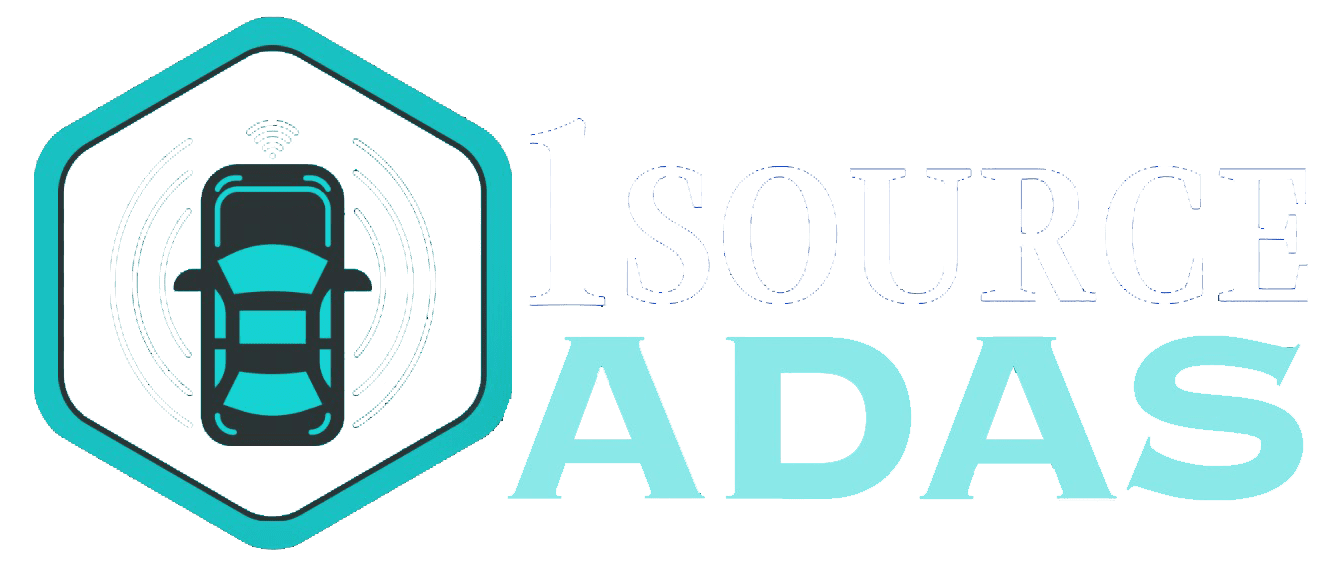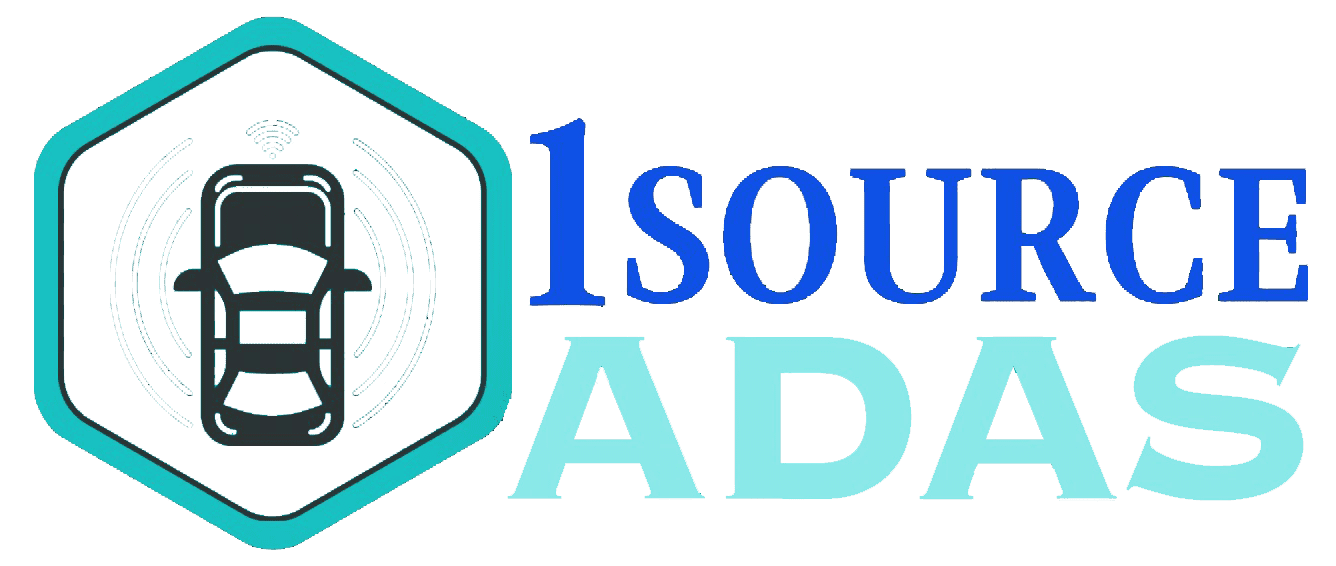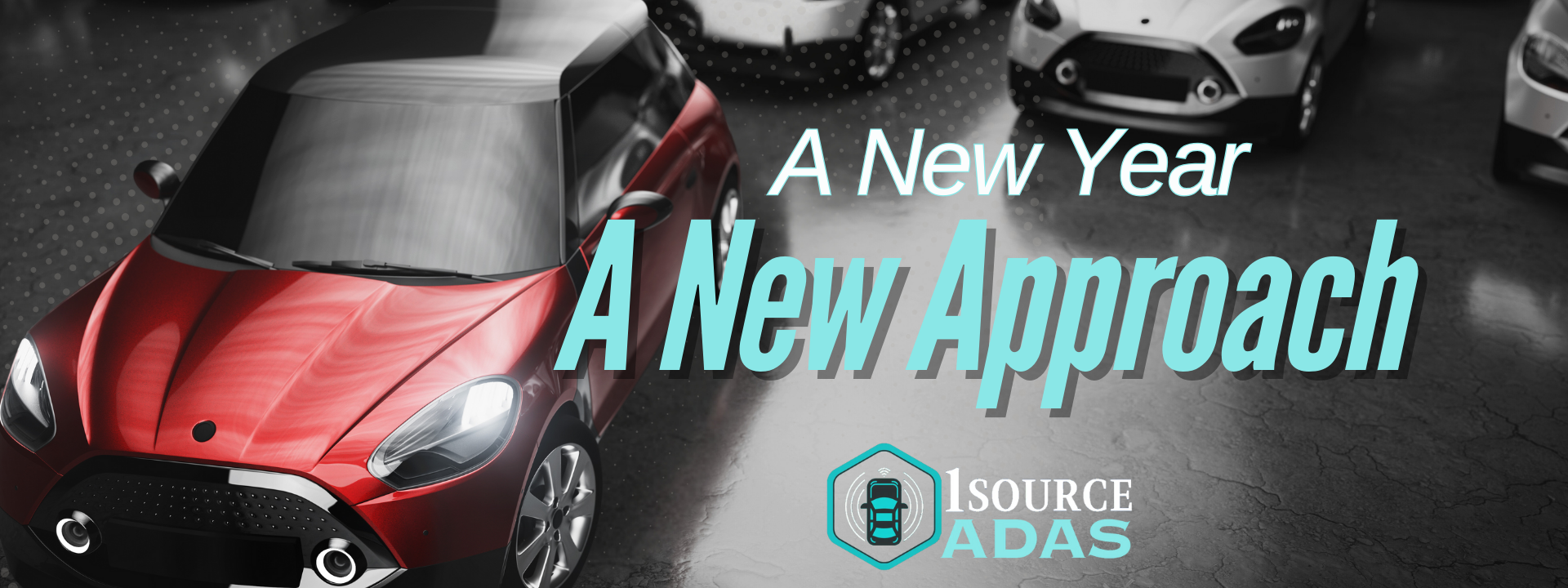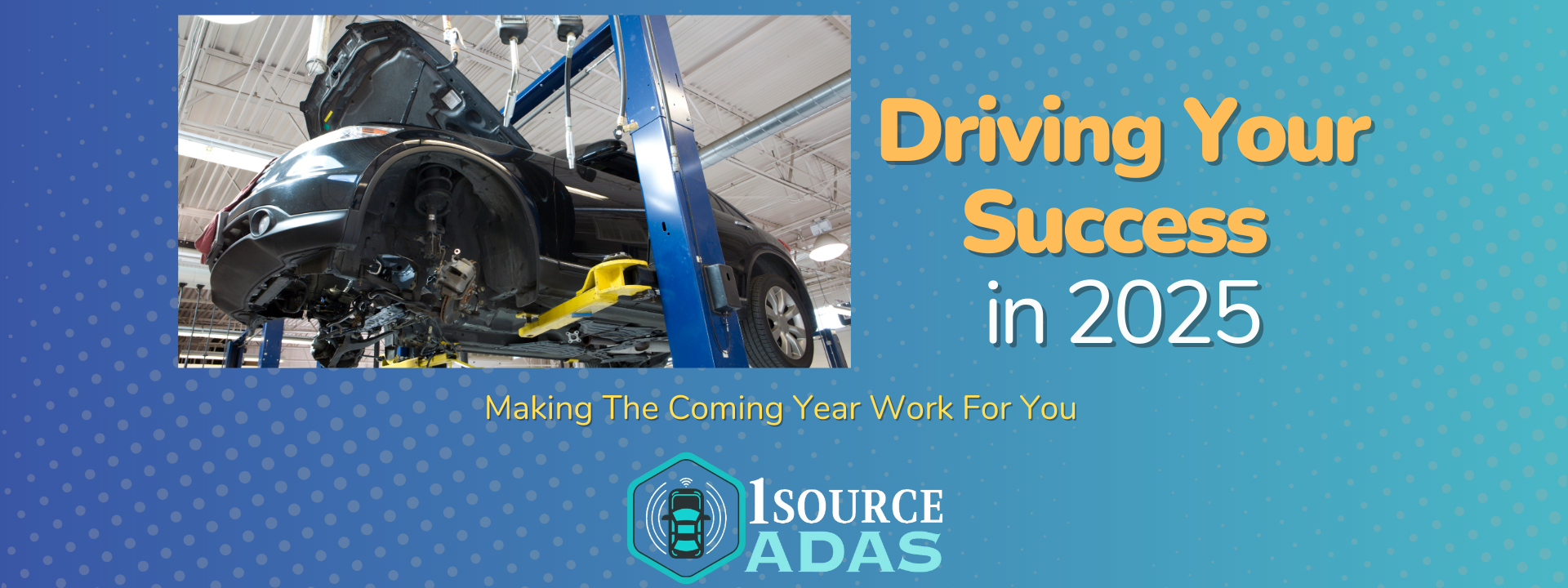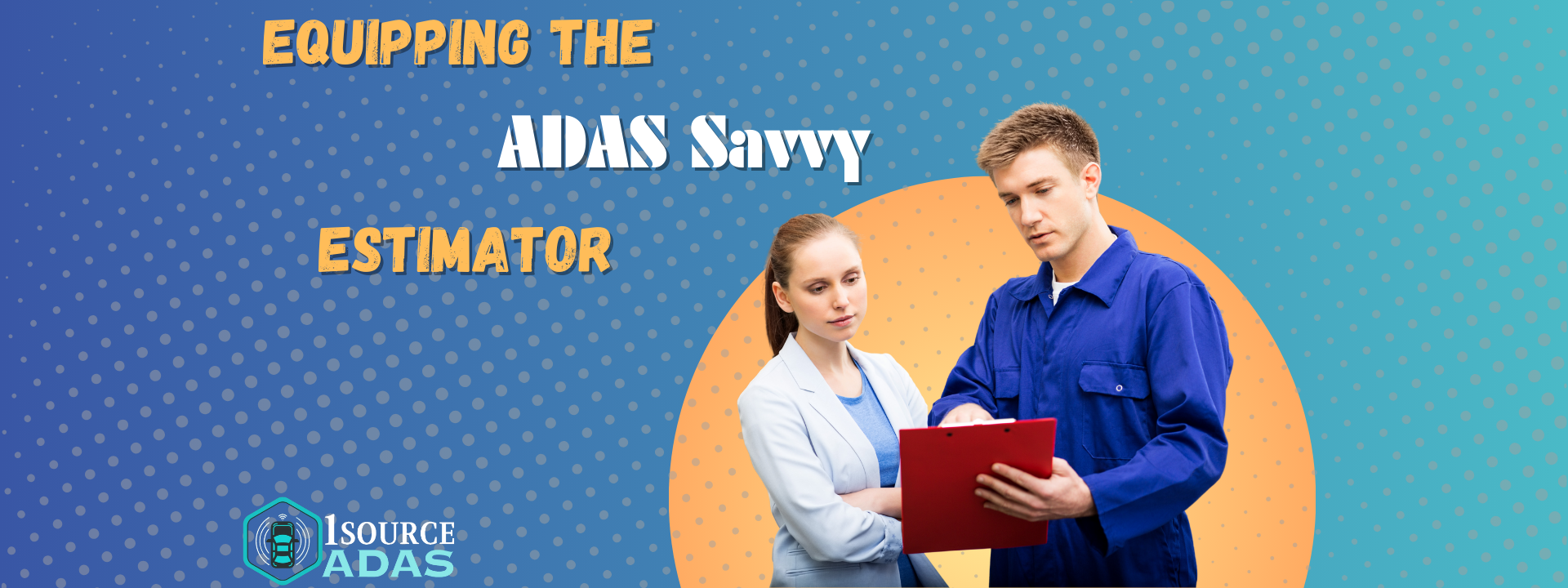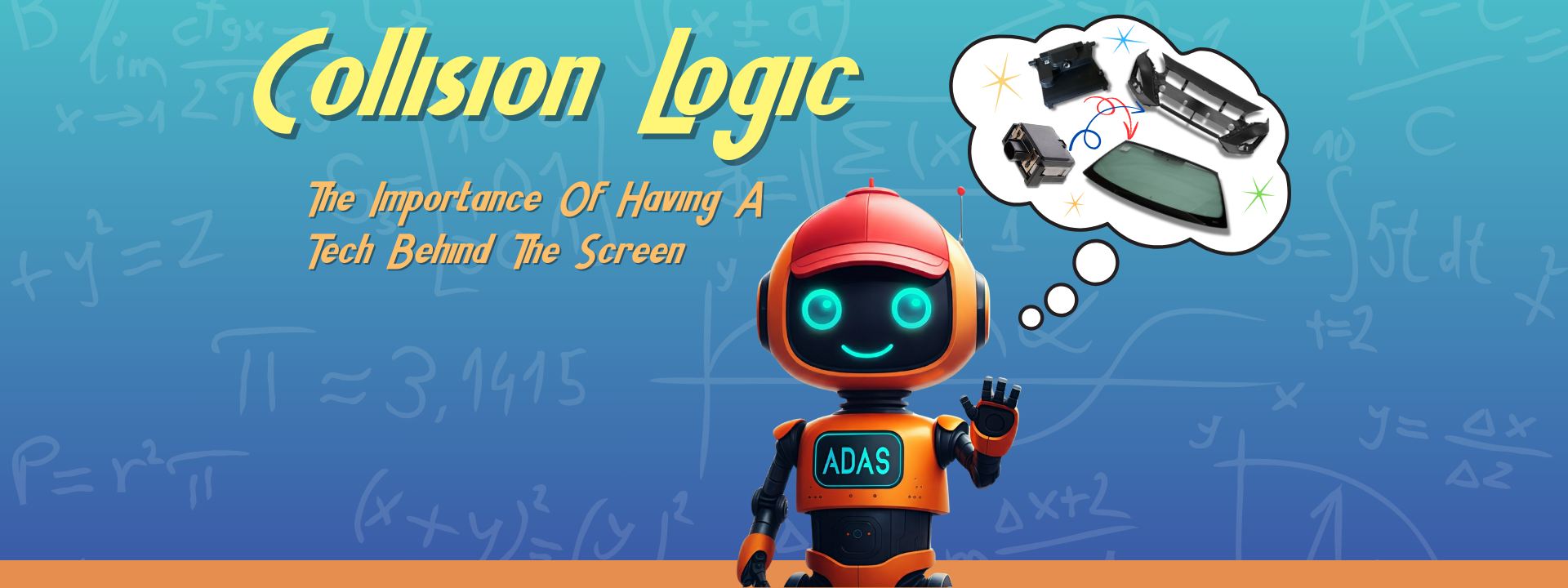Contact@1sourceADAS.com
ADAS is Need to Know, but not Hard to Know
The term ADAS is not new, but what exactly does it mean? Advanced Driver Assistance Systems (ADAS) encompass many technologies designed to make driving safer, more convenient, and more enjoyable. ADAS has been with us since the 1970s with the development of anti-lock braking systems but has evolved into an automated digital suite of computers, sensors, and components designed to improve the quality and safety of your trip. But what are some of the more commonly encountered ADAS systems, what issues can these systems encounter, and what do they require to be corrected?
Today, we’ll look at the basics of ADAS, exploring what it is, how it works, its benefits and limitations, and why it's becoming increasingly important for all drivers, insurers, and service providers to have a baseline of knowledge about these systems.
What is ADAS?
While it is often referred to casually, ADAS refers to any electronic systems in the vehicle that assist drivers in various aspects of driving. These systems use sensors, cameras, radar, and other technologies to gather information about the vehicle's surroundings and provide assistance or even take control of certain functions. Think of them as the vehicle's eyes, ears, and sometimes even hands.
How Does ADAS Work?
ADAS relies on a complex network of sensors, including:
- Cameras: These provide visual data on the road, lane markings, other vehicles, pedestrians, and obstacles.
- Radar: This technology uses radio waves to detect the distance and speed of objects around the vehicle.
- Lidar (Light Detection and Ranging): Similar to radar, lasers are used for even more precise measurements.
- Ultrasonic Sensors: These are used for short-range detection, typically for parking assistance.
The data from these sensors is processed by onboard computers, triggering various ADAS features. These features could be warning indicators, automated braking, speed correction, or simply turning on the windshield wipers for you.
Common ADAS Features:
While by no means an exhaustive list, the following are the most commonly encountered features in modern vehicles. You likely interacted with at least one of these systems on your drive to work this morning.
- Adaptive Cruise Control (ACC): This system automatically adjusts the vehicle's speed to maintain a safe following distance from the car in front. These will often utilize RADAR or LiDAR sensors behind the grille.
- Lane Departure Warning (LDW) and Lane Keeping Assist (LKA): Lane assist systems will alert the driver if they drift out of their lane and may even steer the vehicle back into the lane. Typically, these systems gather visual data from cameras in the windshield, side mirrors, or other locations.
- Automatic Emergency Braking (AEB): This system automatically applies the brakes to avoid or mitigate a collision. It can use data from several onboard systems to determine when a collision is imminent. Once it determines a collision is likely, it can apply the brakes (often aggressively) to avoid or lessen the collision's severity.
- Blind Spot Monitoring (BSM): Blind spot monitors alert the driver of vehicles in their blind spots. The system alerts the driver if it detects another vehicle when changing lanes.
- Parking Assistance: Helps drivers park by providing guidance and sometimes even taking over the steering.
Factors That Can Affect ADAS Performance:
While ADAS offers significant benefits, it's important to know that various factors can affect these systems. While a collision is often the main consideration, it is not the only one.
- Weather Conditions: Heavy rain, snow, fog, or bright sunlight can obscure sensors and cameras, reducing effectiveness.
- Dirty Sensors: Dirt, grime, or snow buildup on sensors and cameras can obstruct their view and impair their function.
- Physical Damage: Accidents or moderate bumps can damage or misalign sensors, requiring recalibration or replacement.
- Software Glitches: Like any software, ADAS systems can experience glitches that require updates or troubleshooting.
- Modifications: Unauthorized modifications or aftermarket accessories can interfere with ADAS systems. Never change a vehicle's ride height or add accessories that cover an area with sensors without consulting manufacturer guidelines. These changes could cause a system to work improperly or not at all.
Maintaining ADAS Performance:
To ensure optimal performance of your ADAS features:
- Keep Sensors Clean: Regularly clean sensors and cameras with a soft cloth.expand_more
- Follow Manufacturer Recommendations: Adhere to maintenance schedules and recommendations for calibration.
- Drive Cautiously: Remember that ADAS is a supplement, not a replacement, for safe driving practices.
- Report Issues: If you notice any problems with your ADAS features, report them to your service provider.
- Collision Damage: It is rare for a vehicle to be involved in a collision and not need one or more systems calibrated. If a sensor is in a service area, the manufacturer likely requires a calibration to be completed.
How To Tell What Services Are Needed:
“No dash light, no problem” is a dangerous mindset for anyone interested in safe and correct vehicle repair. A misaligned sensor may not set a warning indicator or fail but instead, continue operating and feed incorrect data into the system. This can turn a formerly helpful system into a danger for the driver and those on the road around them.
Becoming an overnight ADAS calibration expert is probably not a reasonable solution. So, how can repair facilities and insurers navigate the complexities of ADAS calibration and ensure every repair is safe and the systems are restored correctly to a pre-loss condition? The answer lies in utilizing advanced technology designed specifically for this purpose. The 1Source ADAS system is a new, AI-powered software tool that takes the guesswork out of identifying calibration needs. By simply loading the estimate, the software intelligently determines precisely which calibrations are required based on OEM procedures, ensuring every vehicle leaves the shop with fully functional ADAS systems. As the user, you are provided with a detailed report noting what systems are installed on the vehicle and what calibrations are required based on the damage estimate.
The software is easy to use even if you have zero ADAS experience. With CCC and Mitchell integrations, getting your detailed ADAS report is as simple as exporting your estimate.
Take the guesswork out of ADAS calibration and ensure your repairs are safe and documented. Start your free trial of 1Source ADAS today at https://www.1sourceadas.com/ and register your account today. We would also be happy to show you around the system! Schedule a demo with us at https://www.1sourceadas.com/schedule-a-demo.
1 Source ADAS, based in Longview, Texas, is a leading provider of ADAS calibration software and solutions, expertly designed to support automotive professionals. Our technology ensures the highest safety and performance standards by delivering precise calibration and detailed reporting for all ADAS-equipped vehicles.
OFFICE HOURS
- Monday
- -
- Tuesday
- -
- Wednesday
- -
- Thursday
- -
- Friday
- -
- Saturday
- Closed
- Sunday
- Closed
GET INDUSTRY UPDATES
Get updates on the software, industry news, and tips!
©2023 - 2025 1 Source ADAS. All rights reserved.
